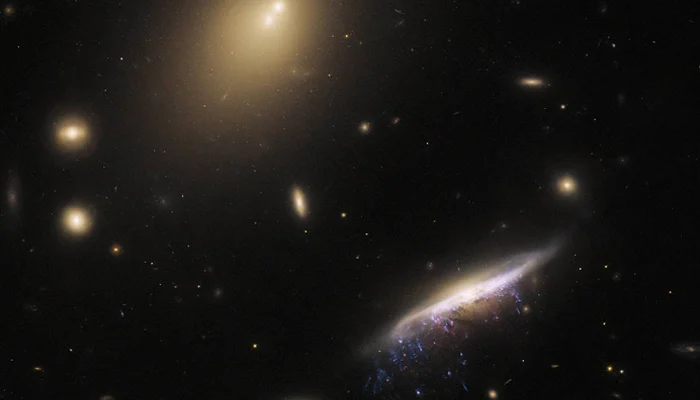The National Aeronautics and Space Administration reported that the Hubble Space Telescope focused on capturing a massive galaxy of stars forming a shape resembling a jellyfish, known as JW100, which is situated at a distance of 800 million light years from Earth in the constellation of Pegasus. (NASA).
On March 20, the European Space Agency (ESA) released the image.
Epileptical objects can be seen blazing in the dark in a number of distant, small-appearing galaxies that encircle the recently discovered galaxy.
The jellyfish galaxy is located in the lower right corner of the photograph, directly beneath IC 5338, a large, bright galaxy that shines brightly at the top.
NASA has announced plans to construct the Nancy Grace Roman Space Telescope, which would be much more powerful than Hubble and capable of taking precise pictures from far-off locations in space.
The James Webb Telescope, one of the most well-known space telescopes, has also produced some stunning images of far-off galaxies and stars.

The galaxy looks like a jellyfish in the image because stars that resemble threads are travelling out from the galaxy’s core.
According to a statement from the ESA, “these are known as tendrils and are formed by ram pressure stripping which occurs when galaxies encounter the diffuse gas that permeates galaxy clusters.”
ESA representatives noted that this thin gas serves as a headwind as galaxies travel through it, sucking gas and dust out of the galaxy and leaving behind the noticeable trailing streamers on JW100.
The reason why cD galaxies typically have numerous nuclei is that smaller galaxies, whose nuclei can take a very long period to be absorbed, are assumed to be the source of their growth.
The bright spots of light that line its periphery are made up primarily of globular clusters, they continued.
The announcement added, “These tendrils represent star formation under extreme circumstances, and may aid astronomers in understanding the process of star formation elsewhere in the universe.”

